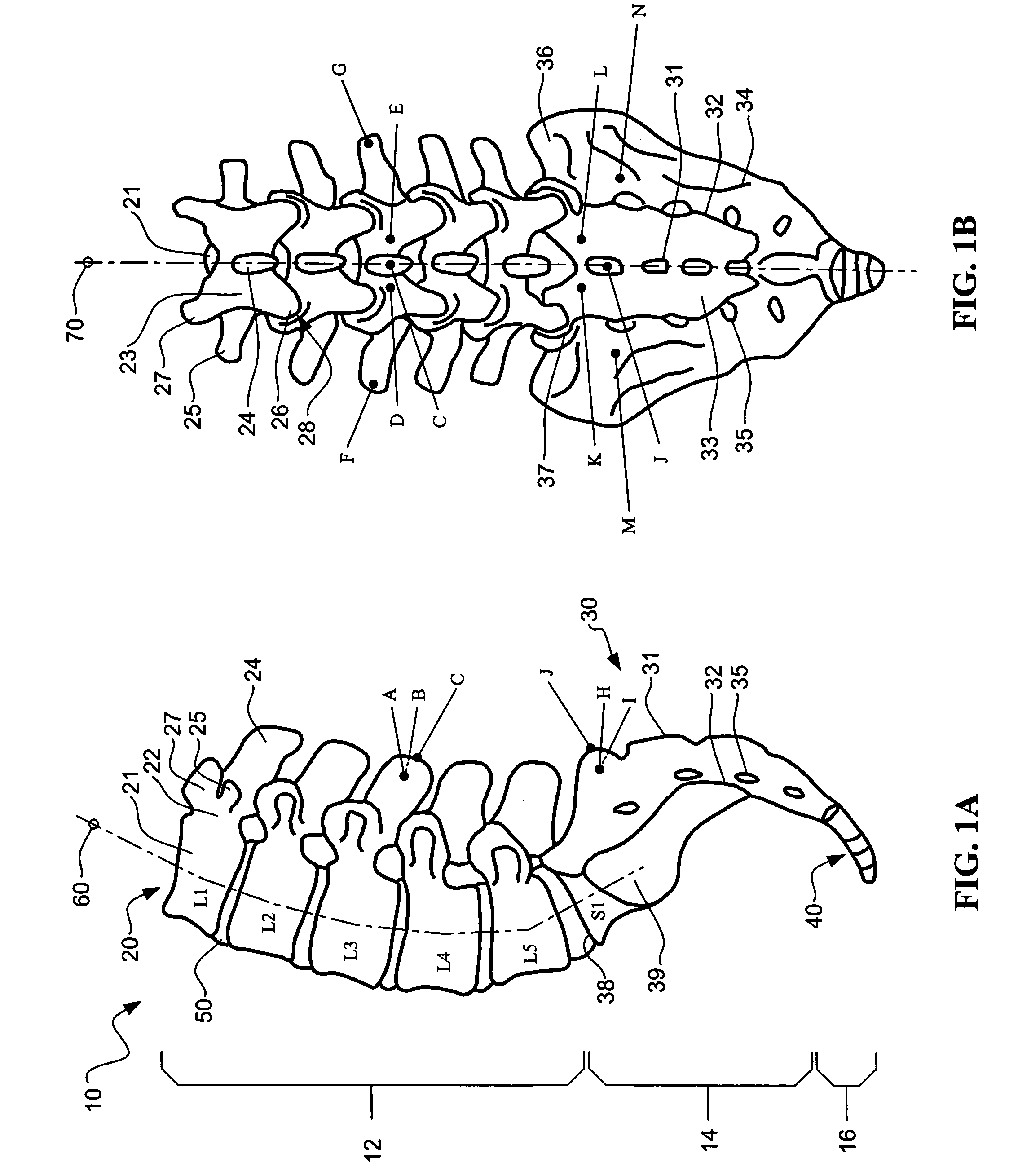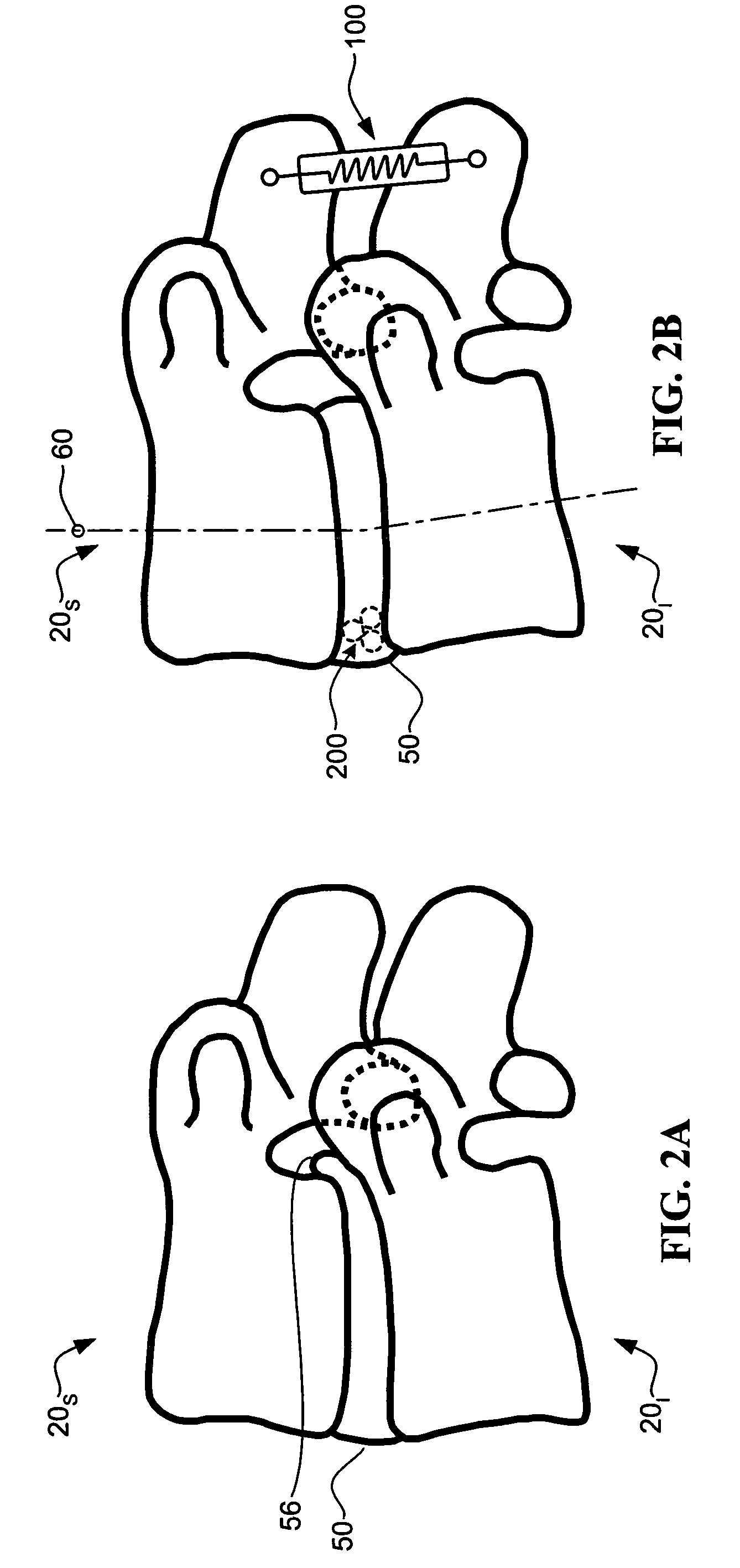Devices and methods for the treatment of spinal disorders
a technology for spinal disorders and devices, applied in the field of spinal implants, can solve the problems of affecting most common and often debilitating conditions affecting millions of people, and compromising the quality of life of people, so as to reduce if not eliminate back pain, eliminate nerve impingement, and reduce nerve impingement
- Summary
- Abstract
- Description
- Claims
- Application Information
AI Technical Summary
Benefits of technology
Problems solved by technology
Method used
Image
Examples
Embodiment Construction
[0045] The following detailed description should be read with reference to the drawings in which similar elements in different drawings are numbered the same. The drawings, which are not necessarily to scale, depict illustrative embodiments and are not intended to limit the scope of the invention.
[0046] With reference to FIGS. 1A and 1B, the lower portion of an adult human vertebral column 10 is illustrated in left lateral and posterior views, respectively. The upper portion of the vertebral column 10 includes the thoracic region and the cervical region, which are not shown for purposes of simplified illustration only. The lower portion of the vertebral column 10 includes the lumbar region 12, the sacrum 14 and the coccyx 16. The sacrum 14 and the coccyx 16 are sometimes collectively referred to as the pelvic curvature.
[0047] The vertebral column 10 includes an axis of curvature 60 which generally forms a double-S shape when viewed laterally. The vertebral column 10 also includes ...
PUM
 Login to View More
Login to View More Abstract
Description
Claims
Application Information
 Login to View More
Login to View More - R&D
- Intellectual Property
- Life Sciences
- Materials
- Tech Scout
- Unparalleled Data Quality
- Higher Quality Content
- 60% Fewer Hallucinations
Browse by: Latest US Patents, China's latest patents, Technical Efficacy Thesaurus, Application Domain, Technology Topic, Popular Technical Reports.
© 2025 PatSnap. All rights reserved.Legal|Privacy policy|Modern Slavery Act Transparency Statement|Sitemap|About US| Contact US: help@patsnap.com



